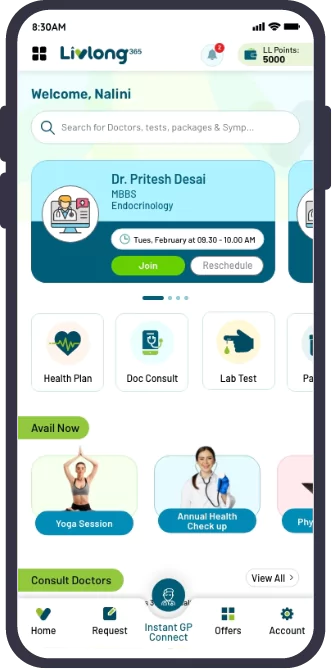Transmyocardial revascularization (TMR), a surgical procedure, aims to enhance heart health and lessen angina symptoms in persons with coronary artery disease (CAD). By creating small channels through the heart muscle by using a carbon dioxide laser, TMLR surgery improves blood flow and oxygen delivery to the heart.
This page serves as a reference if you are seeking information about TMR. It offers insights to help you understand the procedure and its potential benefits. To ascertain whether TMR is the best course of treatment for their unique disease, it is essential to speak with a cardiologist.
What is the TMR Procedure?
Transmyocardial laser revascularization is frequently recommended for individuals afflicted with coronary artery disease (CAD), a condition characterised by narrowed arteries impeding sufficient blood supply to the heart. By utilising a specialised carbon dioxide laser, TMR creates minuscule perforations in the heart muscles, penetrating into the lower ventricle of the heart. These newly formed channels facilitate the enhanced circulation of oxygen-rich blood to the myocardium, promoting improved heart muscle function.
Indications for Transmyocardial Revascularization
Transmyocardial revascularization (TMR) is a procedure performed when conventional bypass surgery is not feasible due to blockage or narrowing of the coronary arteries. TMR is especially helpful for people who are suffering from angina, a sign of coronary artery disease that can present as jaw, neck, back, or arm pain, as well as pain, pressure, or discomfort in the chest.
Transmyocardial laser revascularization may be recommended as a viable option if:
- Standard treatment options such as angioplasty or bypass surgery are not viable.
- You have undergone multiple bypass operations and cannot tolerate another procedure.
- The heart muscle surrounding the affected blood vessels is healthy.
- Your angina symptoms cannot be effectively managed with medications or if these medications are causing significant side effects.
Important Considerations and Expectations Before TMR
To ensure optimal preparation for your transmyocardial laser revascularization surgery, several key factors should be taken into account.
- It is important to communicate any changes in your health, including symptoms of a cold or flu, to both your surgeon and cardiologist, as any infection can impact your recovery.
- Additionally, it is essential to discuss all of your prescription, over-the-counter, and dietary supplement medications in detail with your cardiologist and surgeon.
- You could be asked to have a chest x-ray, blood tests, urine tests, and an electrocardiogram (ECG or EKG) before the procedure to give your surgeon the most recent information regarding your general health.
- On the evening preceding the surgery, you will be instructed to bathe to minimise the presence of germs on your skin.
- If you smoke, it is advised that you stop at least two weeks before your scheduled surgery. Smoking before therapy increases the risk of respiratory and blood clotting problems.
- During the operation, you will be administered anaesthesia to induce sleep, ensuring your comfort and safety throughout the procedure. To ensure the safest administration of anaesthesia, it is important to adhere to fasting instructions and refrain from eating or drinking anything after midnight the night before Transmyocardial Revascularization surgery.
- If you accidentally consume any food or beverages after the designated time, promptly inform your anaesthesiologist and surgeon.
- Your cardiologist and surgeon will provide you with comprehensive instructions regarding the TMR procedure, but it is essential to familiarise yourself with the basic expectations as a TMR patient.
During the Transmyocardial Laser Revascularization Procedure
During transmyocardial laser revascularization, a small incision will be made on the left side of the chest to access the heart.
Since the heart continues to beat throughout the procedure, there is no need for a heart-lung bypass machine, unlike with other cardiac procedures. Using a specialised carbon dioxide laser, the surgeon carefully creates tiny channels, approximately 1 mm in width, within the heart muscle.
These channels are strategically formed during the heart’s systole when the walls are thickest and less prone to damage.
In some cases, the surgeon may combine TMLR with bypass surgery, treating one side of the heart with each method. While the channels may initially bleed, gentle pressure applied by the surgeon helps stop the bleeding.
After the Transmyocardial Laser Revascularization Procedure
Patients with coronary artery disease (CAD) and angina symptoms benefit from transmyocardial revascularization.
The recovery period following TMR varies depending on individual factors, but on average, noticeable improvements can be observed within 3 months.
After undergoing TMR surgery, patients often experience a reduction in CAD symptoms and regain the ability to engage in activities they were previously unable to participate in.
The reliance on medications is significantly reduced, leading to an enhanced quality of life. Medical professionals commonly report that approximately 80%–90% of TMR patients feel better one year after the procedure compared to before.
Additionally, TMR has demonstrated the ability to lower the risk of heart attacks in most patients.
Takeaway
While TMLR surgery serves as an alternative when traditional revascularization options are not feasible, it is essential to carefully evaluate patient eligibility and consider the risks and benefits. Ongoing advancements in TMR technology and techniques, along with research on combined therapies, hold promise for further improving outcomes and expanding the indications for this procedure.
It is essential to perform additional research, clinical studies, and long-term follow-ups to better understand the efficacy, durability, and safety profile of transmyocardial revascularization surgery as the area of cardiovascular medicine develops.
By refining patient selection criteria, optimising procedural techniques, and exploring new avenues of treatment, TMR has the potential to play a significant role in improving the lives of patients with CAD, ultimately contributing to better cardiovascular health outcomes.








